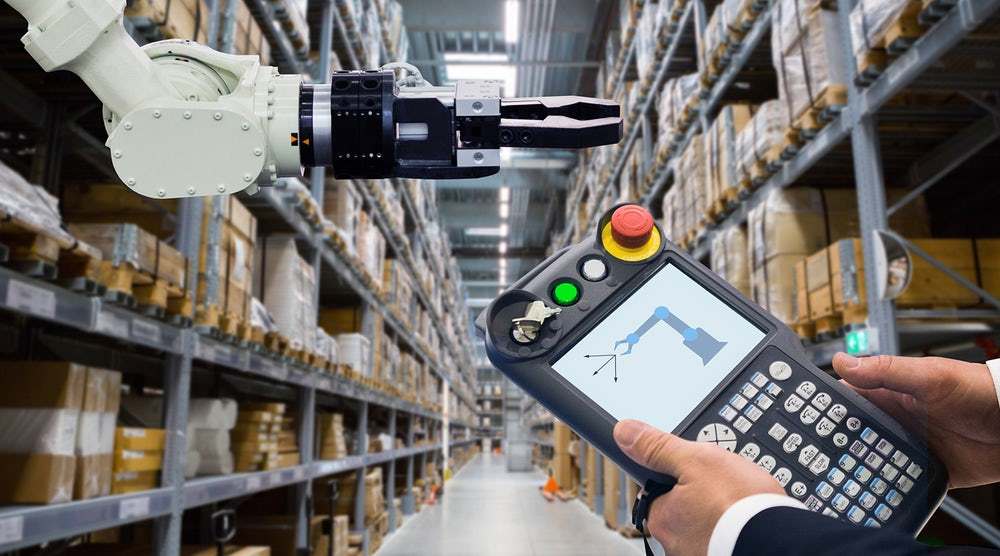Dual mode technology that enables both automated and manual operation within a warehouse.
Jim Gaskell
As an industry, we are continuing to learn from our collective experience with COVID-19, which raised awareness of everything from the hidden vulnerabilities of the supply chain to the importance of having the right mix of forklifts for your operations.
For many, the pandemic has also increased interest in automated material handling equipment as a way to reduce labor costs, increase throughput, enhance facility flexibility and generate operational savings.
The number of supply chain professionals who question whether automation technology has yet to become a viable option is shrinking. Numerous successful projects and applications across the industry have shown that there can be benefits to incorporating certain types of automation into warehouses and distribution centers.
The question is no longer “should we implement automation technology?” but rather “where or how should we start?”
Taking an Informed Approach to Automation
Supply chain managers are often presented with case studies showing new, fully automated facilities that can make it feel like the technology is still somewhat out of reach for those with manual operations. Building a new, completely automated facility may not be possible in the short term. The significant upfront investment and infrastructure requirements of a fully automated approach typically involve long-term strategic planning and preparation.
So, if you’re one of the supply chain managers trying to determine which automation strategy and technologies are right for your operation, what should you do? You can start by ensuring you have the right mix of automated and manual processes that can help position your operation for consistent performance enhanced by productivity gains. The mix will depend on your priorities, operations and business objectives.
The data gathered from a telematics system, such as a forklift fleet and operator management system, can help you identify those tasks and equipment that are ideal candidates for automation. Prioritize those opportunities based on metrics that make sense for your business and develop a clear path for tangible ROI. Having the right data enables you to quickly and strategically grow and evolve your automation efforts, adding diversity and flexibility to your forklift fleet.
Implementing Dual Mode Automation
A flexible automation solution gaining a lot of attention is dual mode technology that enables both automated and manual operation.
Dual mode technology enables warehouses to take an incremental approach to deploying automation solutions with minimal or no supporting systems or infrastructure. It can be an ideal approach for companies that may not have a warehouse management system (WMS), but would still like to realize benefits from automation technology. Some operations that utilize a WMS that may have avoided automation because they experience a small percentage of process exceptions can leverage dual mode vehicles to implement automation while retaining manual operation to help manage these exceptions.
Forklifts with dual mode automation technology are capable of switching between manual and automated operations, depending on the needs of the facility. The technology is based on automated equipment that can be operated manually; it is not a piece of manual equipment that has been engineered to operate autonomously. The equipment’s automation features are fully integrated into the vehicle as they typically are in a fully autonomous vehicle. The difference is that the dual mode technology allows the equipment to be used as any other manual equipment would be used when the application calls for it.
For instance, consider a tow tractor used to pull carts on a prescribed mission from point A to point B in a facility, with material being loaded and unloaded at each point. Using a tow tractor with dual mode technology, the travel between the two fixed points can become automated, freeing up an employee to focus on other tasks. If the dual mode tow tractor encounters an obstacle in its set path, such as a pallet in an aisle, it will come to a complete stop and an alert will appear on the telematics system’s mobile dashboard, which can also be used to locate the tow tractor.
A typical trained forklift operator can then be dispatched to the tow tractor to switch the vehicle into manual mode and navigate it around the obstacle. Once it is back on its set path, the operator can return it to automated mode so it can continue to its destination, maintaining the flow of the system and uptime.
A dual mode system doesn’t require the specialized staff that may be required to move or manage a fully automated solution. For one thing, the familiar controls used for manual operation means a shorter learning curve for traditional forklift operators to interact with it and switch between automated and manual modes. One employee can often manage multiple dual mode vehicles, stepping in only when manual operation is needed.
This is just one example of a process that could be streamlined with dual mode automation, and the possibilities will only increase as dual mode technology continues to evolve. By enabling a scalable approach, dual mode automation technology offers the flexibility companies need to develop their automated processes at their own pace. It can mitigate some of the risks associated with integrating automated solutions into your operations.
As you explore options for dual mode technology, an experienced material handling partner can help determine how best to integrate the technology into your processes in a way that enables the benefits of the technology to be fully realized and ROI to be generated with each deployment.
Jim Gaskell is director, global automation & emerging technologies with Crown Equipment, a manufacturer of forklifts and material handling products.

